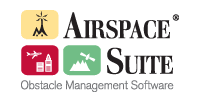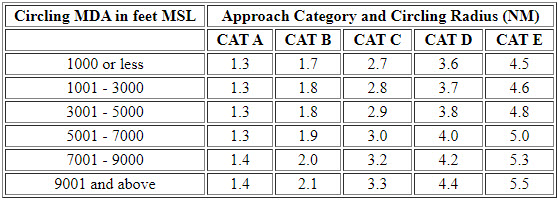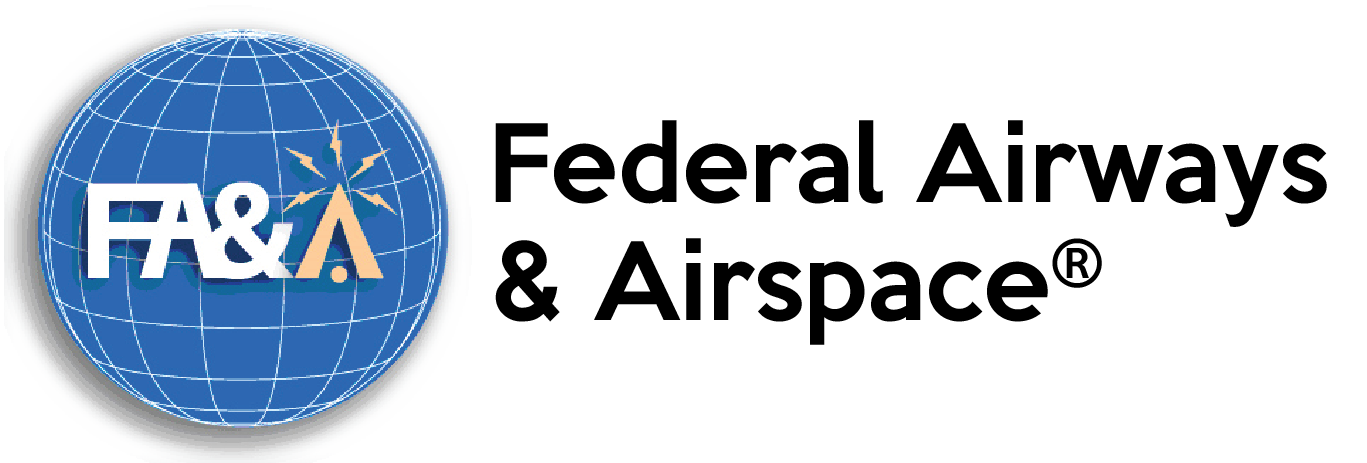- January 7, 2014
- Posted by: Airspace USA
- Category: Software Update

Airspace OMS Changes
Change 21 to FAA Order 8260.3B, “United States Standard for Terminal Procedures (TERPS)” was issued June 5, 2009. This change modified the circling maneuvering area and other aspects of terminal procedures. The expanded coverage area for circle to land aircraft is now being implemented. This implementation began in May 2013. It is only applicable to those instrument procedures that are new or have undergone revision since that date.
Should your site be located within the expanded area you may receive a message like the one below:
At 537 AMSL ‐ Ruston Regional (RSN), LA. ## Circling MDA Cat D all procedures (except NDB Runway 36 and VOR/DME‐A) increase from 880 to 900 AMSL, NEH 530 AMSL. W/2C, no effect. ## Plan on File, Chg 21 Circling: Increase Cat B circling all procedures (except NDB Runway 18) from current 780/800 to 900 AMSL, NEH 430 AMSL. W/2C increase to 840 AMSL, NEH 480 AMSL. You will not be afforded an extend study due to the impact at the airport.
This airport has the following landing procedures:
1) NDB RWY 18
2) NDB RWY 36
3) VOR/DME-A
4.) RNAV (GPS) RWY 36
5) RNAV (GPS) RWY 18
None of the current procedures (as of 11/10/2013) are newer than the 348th day of 2012. However, because there is a plan on file to modify these procedures the circling areas will expand in the following manner.

The original circling areas are given below.

This expanded area will apply to some procedures and other it will not. The presence of the letter “C” in white letters inside a black box will indicate the expanded area is being applied.
This symbol will be located on the circling line minima.
The basic criteria for determining whether to apply the expanded CAA area (buildable height) is the date found on the instrument procedure itself. First look for this symbol. If the symbol is not found, look at the bottom left corner of the page for the procedure validation date. If the date of the procedure is May 2013 or later then application of the expanded area is likely even if no symbol exists. If there is no symbol or the date is earlier than May 2013 the expanded area should not apply. The trouble with this logic is the FAA could use there “plan‐on‐file” aspect of the OE/AAA process to make it applicable even if there are existing objects in the expanded area that penetrate the surface. In this case be prepared to submit data on the existing objects that penetrate the circling surface.
To do this, add 300 feet to the height of the existing object plus the vertical accuracy value. If this new calculated value exceeds the limit of the feedback from the FAA on the allowable height of your object then this information needs to be part of your reply back to the FAA. Make sure the existing object you are using, in this mitigation effort, is within the same circling area or is between your site and the airport and it exists. Confirm its existence by entering the coordinates in the Set Point module. This can be found under the ‘DRAW’ menu within your TERPS® software.
After the coordinates of the structure are entered as latitude/Longitude on the form press the ‘Google Earth’ button. This will load Google Earth which will focus on the location of the identified structure. The coordinates can be found in the Obstacle Report. The reference to this change was implemented into Airspace in 2009. The expanded circling area can be found in the Airport Report. This change will not affect notice requirements as specified in Title 14 CFR Part 77.9. The allowable notice height within 20,000 feet of the nearest runway will be required for object up to 200’ above the runway (slope application). At distance beyond 20,000 feet notice is required for all object that exceed 200 feet AGL. The information on the FAA’s “Adverse Assumption Obstacle” is covered in detail in FAA Order 8260‐19E, Chapter 2, Section 11 “Obstacle Data”, paragraph 2‐74.
If you have any questions or concerns, please give our office a call at (321) 777-1266, or send us an email, , we would be happy to assist you.
